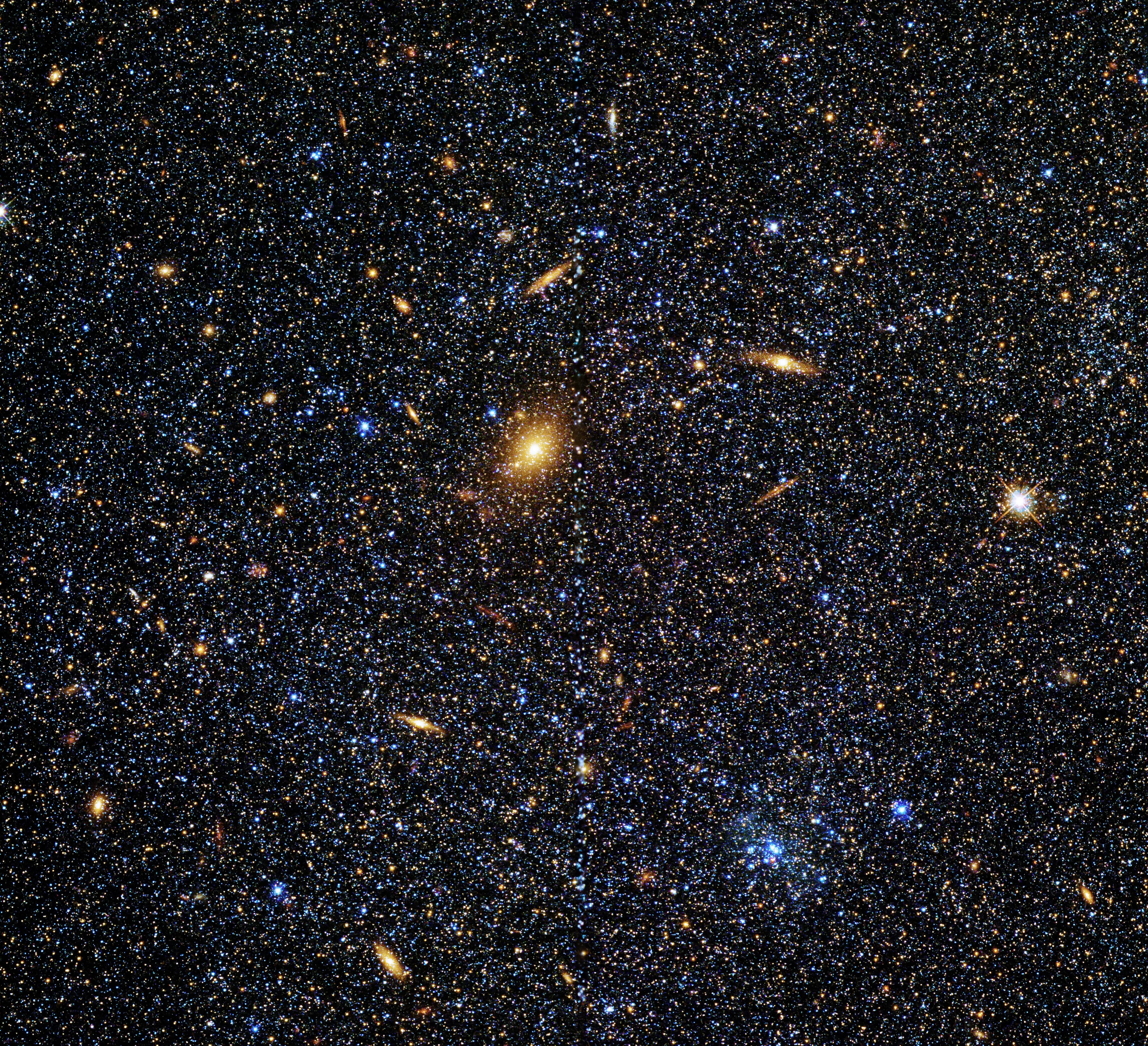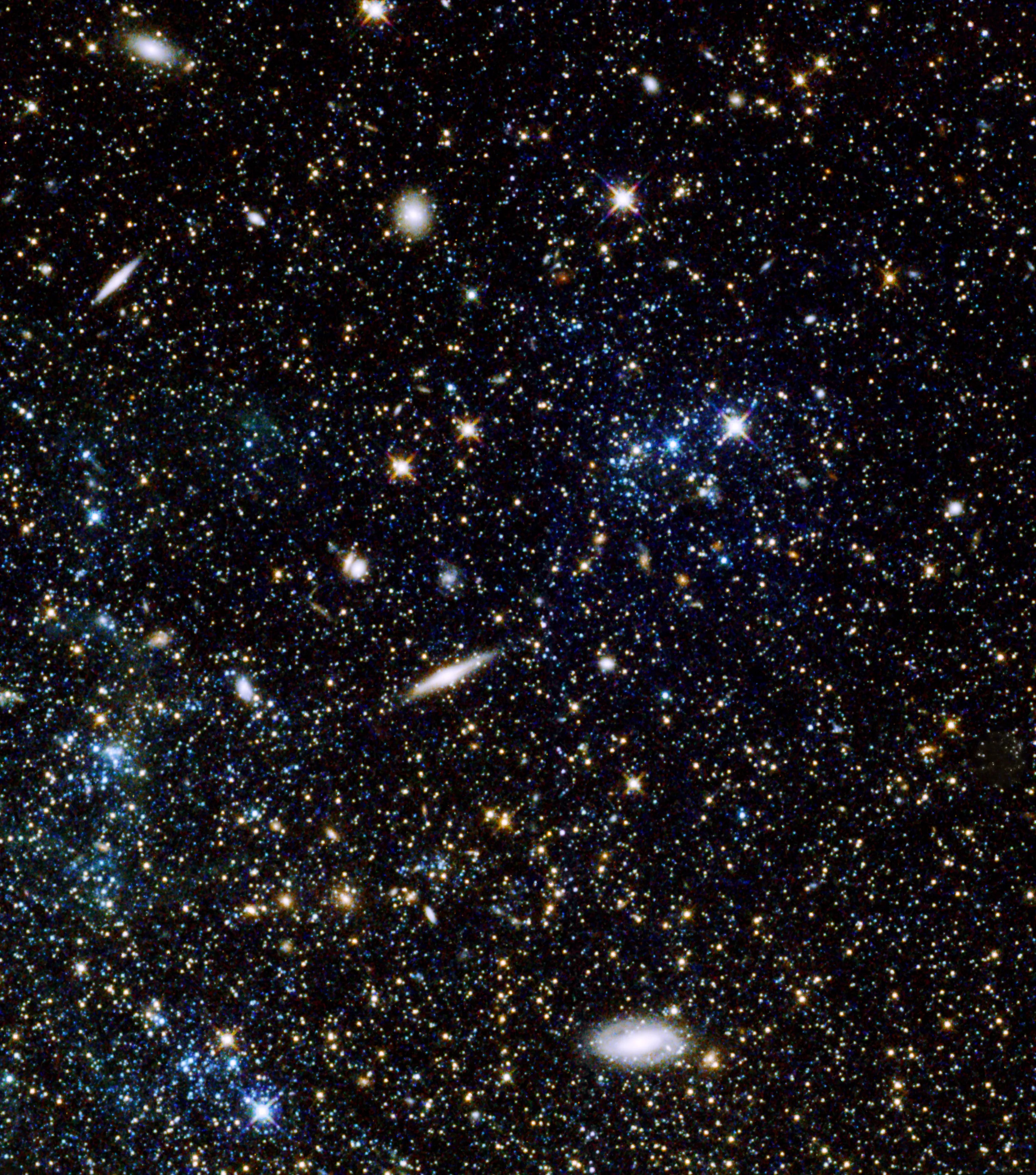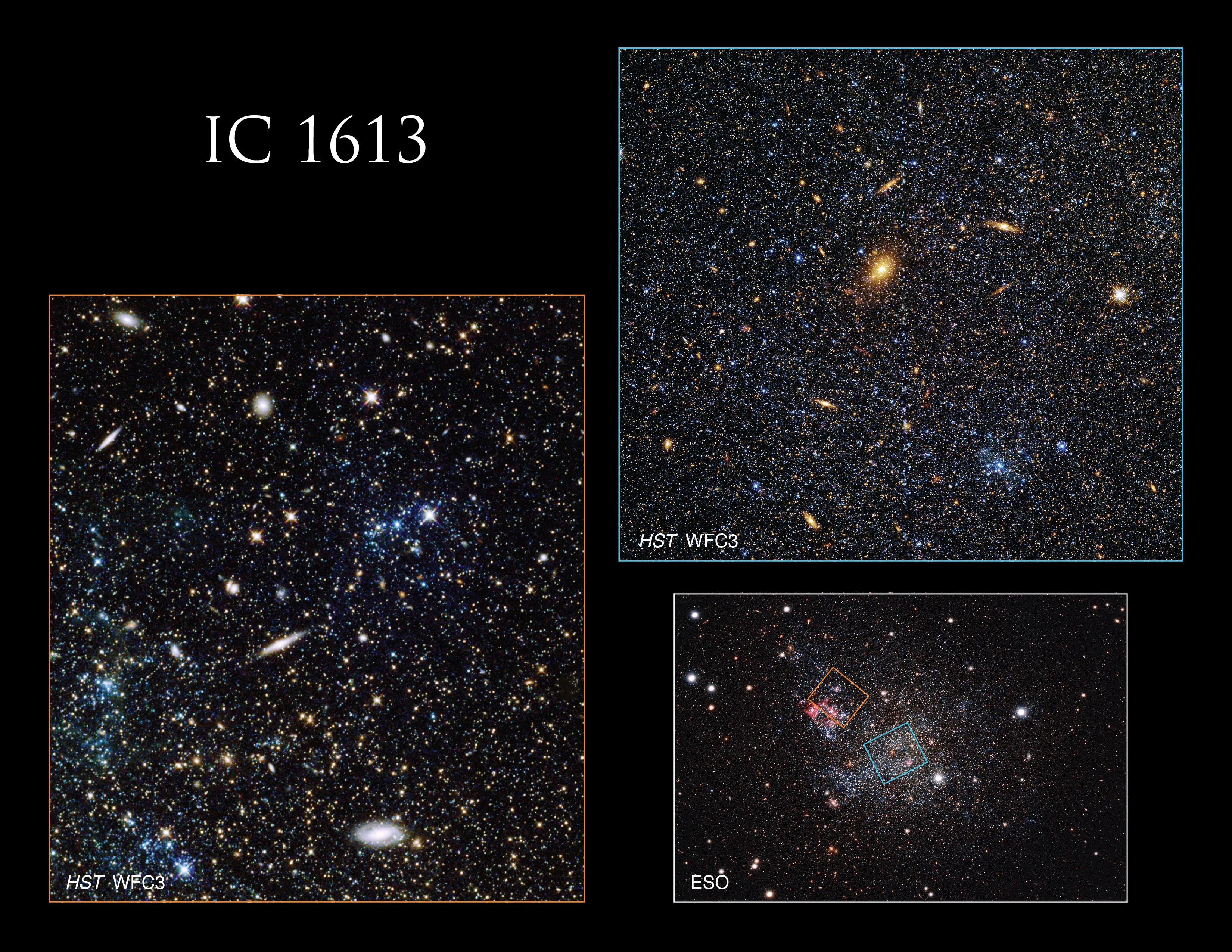Caldwell 51
This irregular dwarf galaxy is in the constellation Cetus.
Distance
2.3 million light-years
Apparent Magnitude
9.9
constellation
Cetus
object type
Dwarf Galaxy

Caldwell 51, also known as IC 1613, is an irregular dwarf galaxy located in the constellation Cetus. This member of our Local Group of galaxies is located just 2.3 million light-years from Earth and has an apparent magnitude of 9.9. Despite its relative proximity, Caldwell 51 is very difficult to spot and is one of the most elusive Caldwell objects. It appears as an extremely faint and diffuse smudge in the sky, even when viewed through moderately sized telescopes. The galaxy is visible from the Northern Hemisphere in the autumn and from the northern regions of the Southern Hemisphere in the spring. It was discovered in 1906 by the German astrophotographer Max Wolf, who also found many other astronomical objects over the course of his life, including comets, supernovae, and asteroids.

Caldwell 51 is notable for its role in improving distance measurements to more remote objects. Unlike many galaxies, Caldwell 51 is largely unobstructed by dust, and our relatively clear view of the RR Lyrae variable stars it hosts allows astronomers to make precise distance measurements. RR Lyrae variables are pulsating stars that have pulsation periods directly related to their luminosity. So, how fast they pulse tells astronomers how bright the stars truly are; then, how bright the stars actually appear tells astronomers how far away they must be. This relationship allows the stars to act as “standard candles” that can be used to determine the distances to objects within our Local Group of galaxies.
This image of a region near the center of Caldwell 51 is a composite of ultraviolet, infrared, and visible-light observations made by Hubble’s Wide Field Camera 3. The observations were taken to determine the galaxy’s chemical composition. Since most elements in the universe are formed by stars and distributed into their galaxy when the stars die, this information can help researchers learn more about the evolution of the galaxy and its star formation history.


Glossary
Apparent Magnitude - The brightness of an astronomical object as seen from Earth, influenced by the object's distance from Earth, its absolute magnitude, and even gas and dust that lie between the object and Earth.
Dwarf Galaxy - A small, faint galaxy with only millions to a few billion stars.
Standard Candle - An astronomical object with a known absolute magnitude, allowing astronomers to precisely calculate its distance from Earth by measuring its apparent brightness.
Supernova - The explosion of a massive star at the end its life, which ejects material into space and causes the star to temporarily brighten in our sky.
Explore Hubble's Caldwell Catalog
The following pages contain some of Hubble’s best images of Caldwell objects.

Caldwell 1
Also known as NGC 188, this group of stars formed from a large cloud of gas making the stars roughly…

Caldwell 2
This shell of gas is expanding outward, away from the dying star within.

Caldwell 3
This barred spiral galaxy was first spotted by British astronomer William Herschel in April 1793 in the constellation Draco.




